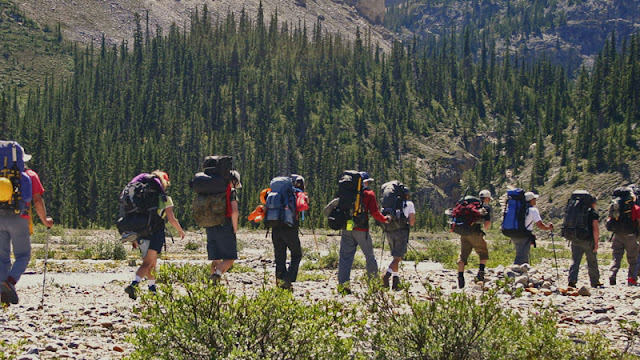Utah Valley is composed of thousands of square miles of wilderness, making it one of the best hiking destinations in the United States. Utah Valley features six mountain peaks that are over 10,000 feet tall and more than 300 miles of trails. Thrill seekers looking to get out of the house and into nature are sure to find adventure here! Make sure to check if the trail heads are open before heading out.
Tips for Hiking in Utah Valley
The key guidelines for spending time in nature, no matter where you are and how long you are staying, are referred to as “Leave No Trace.” By not leaving a trace of your expedition, you are helping preserve the outdoor experience for those who come after you and care for the natural environment. There are seven principles to this philosophy:- Plan ahead for your trip and make sure you are prepared in both terms of equipment and physical abilities.
- Travel and camp on intended surfaces, so you do not hurt yourself or damage the land. For example, stay on hiking trails and camp in marked areas.
- Dispose of litter properly, even if you have to carry it with you throughout your trip.
- Leave what you find; do not keep flowers, leaves, or other pieces of nature no matter how small.
- Minimize the impact of campfires by putting them out entirely and following the rules for fires posted in the area.
- Respect wildlife: do not feed, disturb, or come close to wild animals. This is their home!
- Be respectful of other visitors by not being too loud, giving uphill hikers and horseback riders the right of way, and keeping your pets leashed and under control.
Before setting out on your adventure, make sure to pack light by only bringing the essentials with you. Map out your hike, including potential stopping points like water sources, scenic areas, or campgrounds. Ensure that you are in good physical shape by taking frequent short hikes leading up to a bigger trip. Give your trip details to a friend or family member so they can help keep you safe. Consider hiking with a friend to help you stay safe, avoid getting lost, and help pass the time.
When on your Utah Valley hike, be prepared for high altitudes that may make your trip more strenuous. Wear layers to keep you warm in cooler months and prevent sunburn in warmer months—sunburn is more common at higher elevations. Finally, make sure you adhere to the Leave No Trace guidelines to protect the environment and keep it beautiful for future visitors.
The Best Hikes in Utah Valley
These hikes are intended for those more experienced due to their high elevations, longer trips, and steep climbs. The best time of year to hike in this region is between June and September, due to the milder weather and lack of snowfall.Mount Nebo: this is an 8.5-mile hike with an elevation of 11,928 feet and an elevation gain of 3,851 feet. This is the highest peak in the Wasatch Range, and is located along the Nebo Loop at the start of the North Peak Trailhead. The trail is often covered in snow all year, so be prepared by bringing snowshoes. Also be prepared with plenty of drinking water; there are no stops to refill along the route. This is a difficult hike, but the views at the summit are worth it.
Provo Peak: this is an 11.4-mile hike with an elevation of 11,068 feet and an elevation gain of 7,119 feet. This mountain sits just behind the famous Y Mountain in Provo, and is not as popular. It is a steep and strenuous hike requiring some dirt road travel to reach the trail. Experts recommend camping along the way to break up the trip. You will be rewarded at the summit with panoramic mountain views.
Box Elder Peak: this is a 10.2-mile hike with an elevation of 11,101 feet and an elevation gain of 4,812 feet. The peak is located in the middle of the Alpine Loop. The easiest way to access it is from Alpine City to Dry Creek Trail, though there are other options as well. This hike is well known for its wildflowers and bird watching opportunities and offers beautiful views throughout.
Spanish Fork Peak: this is a 10.6-mile hike with an elevation of 10,192 feet and an elevation gain of 4,685 feet. It is a mainly uphill hike featuring a freshwater stream, a small lake, and plenty of wildlife. Hikers report having seen elk, deer, cows, and even bears here, so proceed with caution and do not disturb the wildlife. This hike is recommended to be taken with a friend as navigation gets more tricky the closer to the summit you get.
Experienced hikers from all over the country are drawn to the opportunities in the Utah Valley region. Though more strenuous than some other popular hikes, these hikes are great for spending longer periods of time in nature and taking in stunning mountain views. They may be challenging, but they are worth it when you reach the summit. Make sure your physical conditioning is up to par, you have the essential supplies, and you have picked a friend willing to take on this adventure with you.
After your hike, you are sure to walk away with stories, photos, and a strong sense of satisfaction for having made it to the summit. If you are in good physical shape, enjoy an adrenaline rush, and are looking for your next adventure, consider one of the hikes available in Utah Valley.





